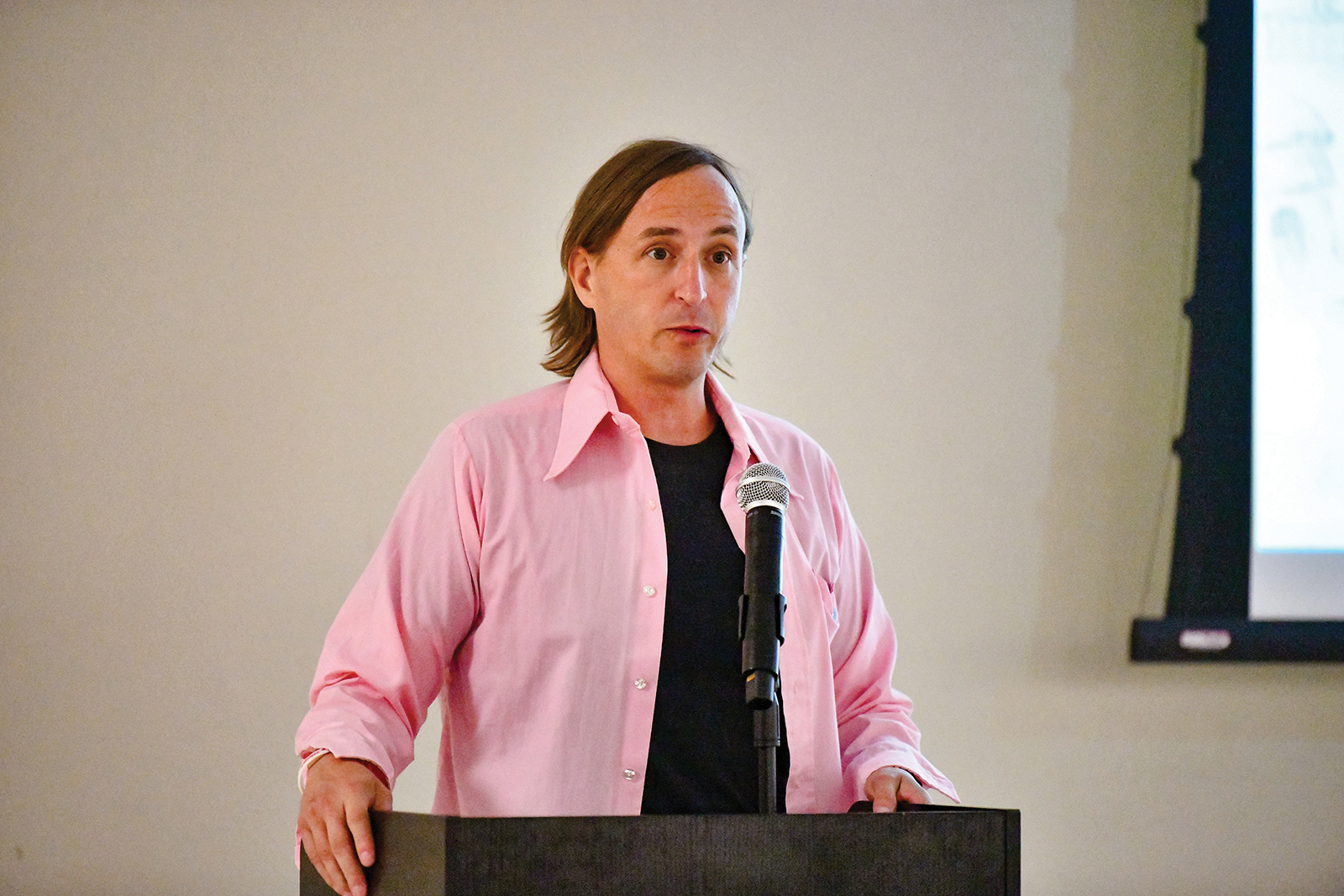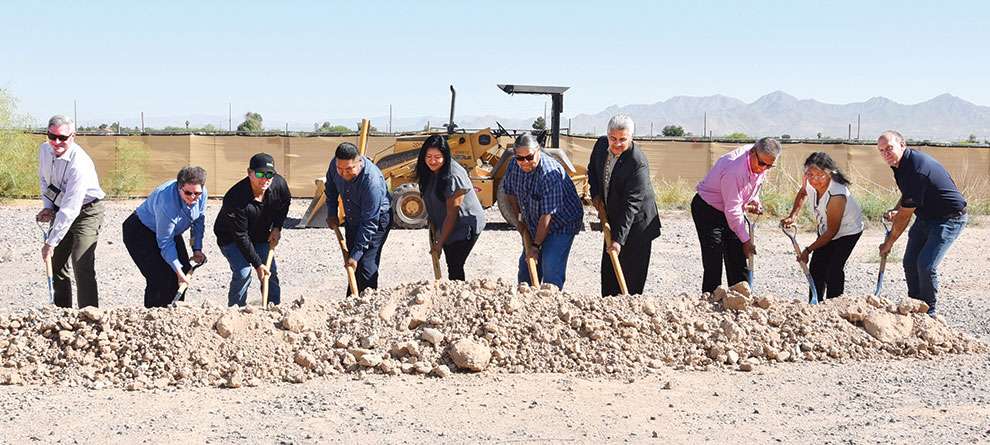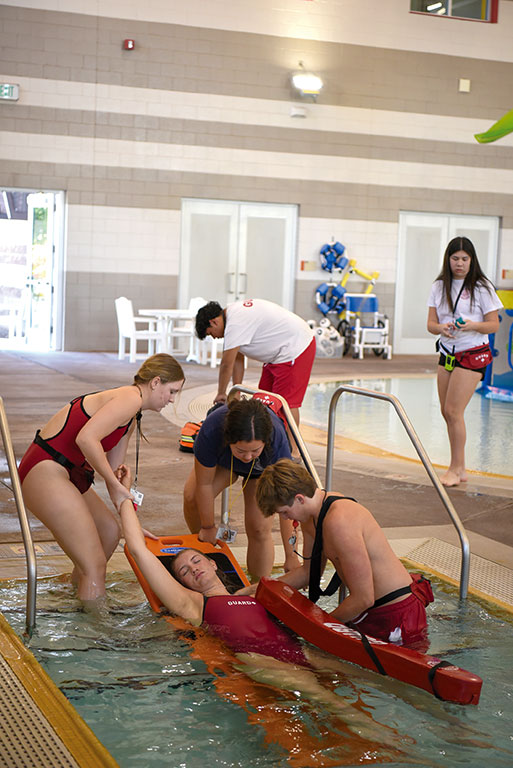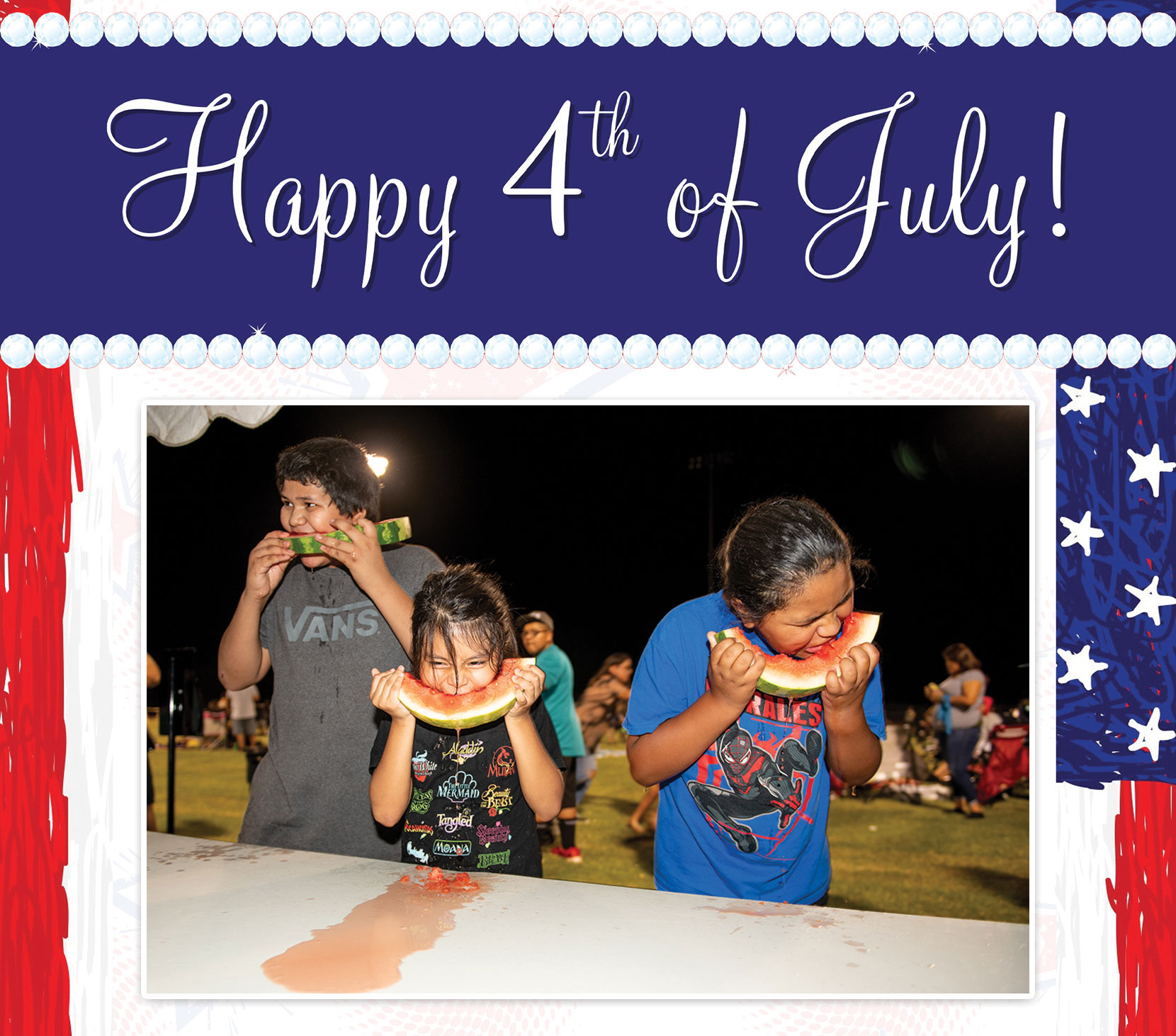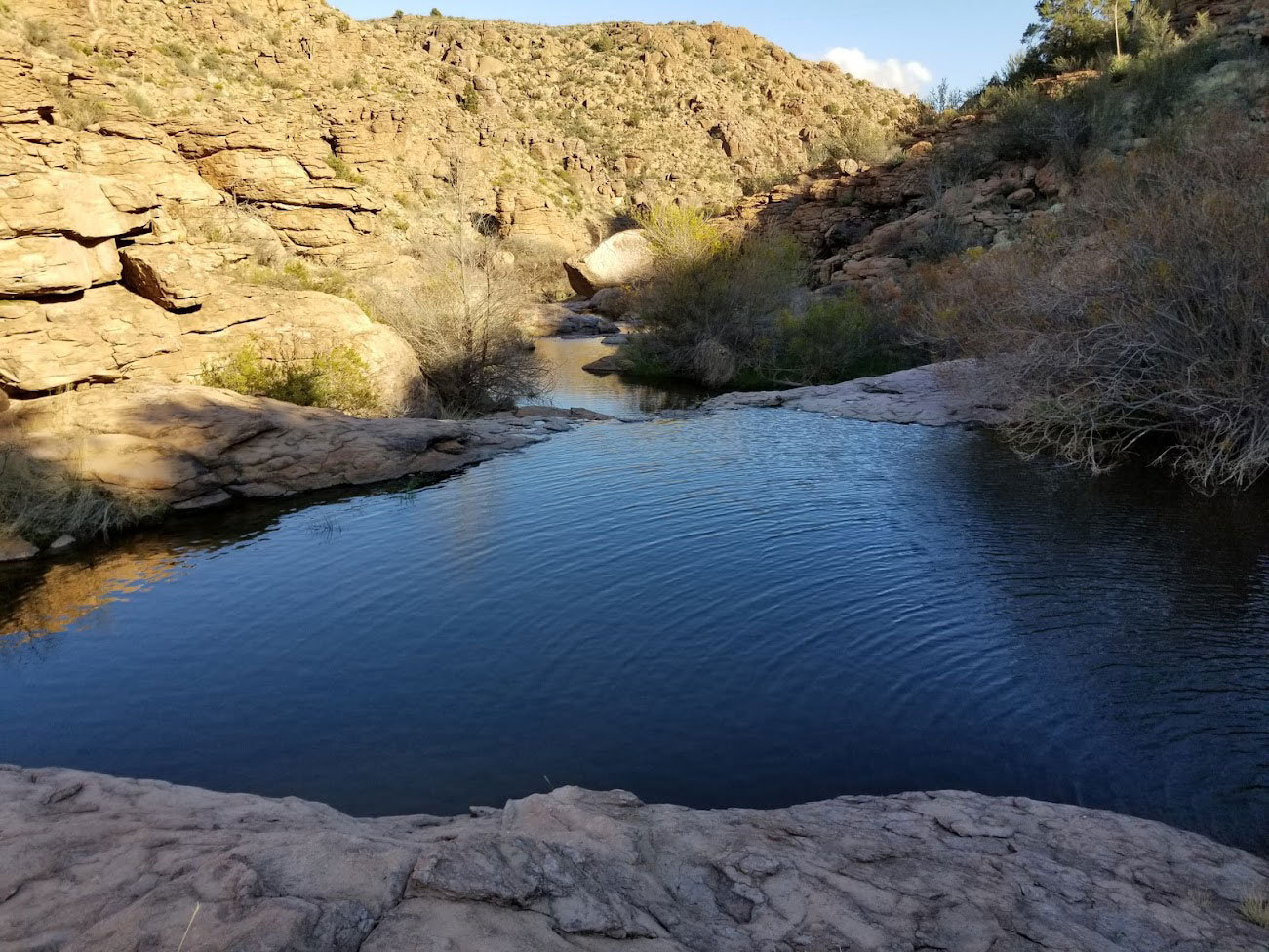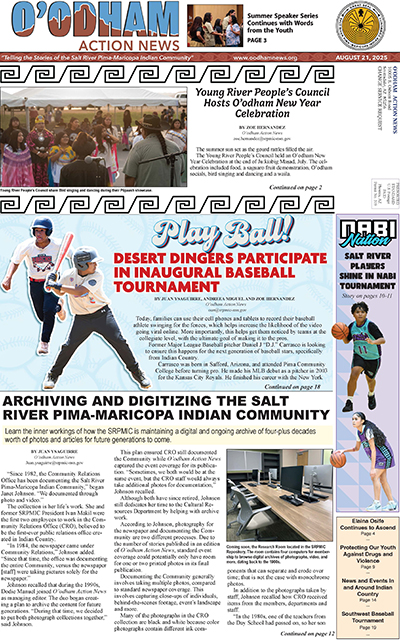VIEWS: 1741
July 30, 2024Preservation Anthropologist Aaron Wright Provides Piipaash History Presentation
Archaeology Southwest is a Tucson-based nonprofit organization that was established nearly three decades ago. The organization practices preservation archaeology, a term which contains three distinct phases: pursuing big-picture research questions through low-impact investigative methods, sharing results with professionals and the public, and actively protecting sites through ownership and/or conservation easements.
Aaron Wright is a preservation anthropologist and a staff member of Archaeology Southwest. Since earning his Ph.D. in anthropology in 2011, Wright has worked on various cultural resource projects in New Mexico, Arizona, California and other locations. More recently, Wright has focused his research on the Hohokam and Patayan traditions across the southwestern part of Arizona.
On July 9, inside the Lehi Community Building, Wright hosted his latest presentation, “Intro to Arch: Triangulating Piipaash History along the Lower Gila River, Southwest Arizona.”
Salt River Pima-Maricopa Indian Community Cultural Resources Director Kelly Washington provided a few welcoming words to the guests. Washington detailed how he has been following Wright’s work for quite some time and was pleased to have him present his research to Community members and the public.
To begin, it is important to understand that for centuries, the Piipaash lived along the lower Colorado River and the Great Bend of the Gila River.
“It’s an honor to be here on Salt River tribal land,” began Wright. “Triangulation needs three different points to see where you are on the landscape: 1. Descendant insight, which is oral history. 2. Primary texts and historical documents, known as ethnohistory. 3. Finally, there is material culture, known as archeology,” Wright said. “All of this helps us in getting an accurate and comprehensive understanding of the past.”
In his presentation, Wright detailed the oral history of the Piipaash migration narrative by sharing the origin story from Piipaash/Xalychidom member Hu He Shaal (English translation: Dog’s Hand). “He was taught a history of Xalychidom migration from along the Colorado River from his father. Hu He Shaal would teach his nephew, Ike Gates, the same Xalychidom migration history. Later, Ike Gates would teach his nephew the same story. Ike Gates was from Lehi.”
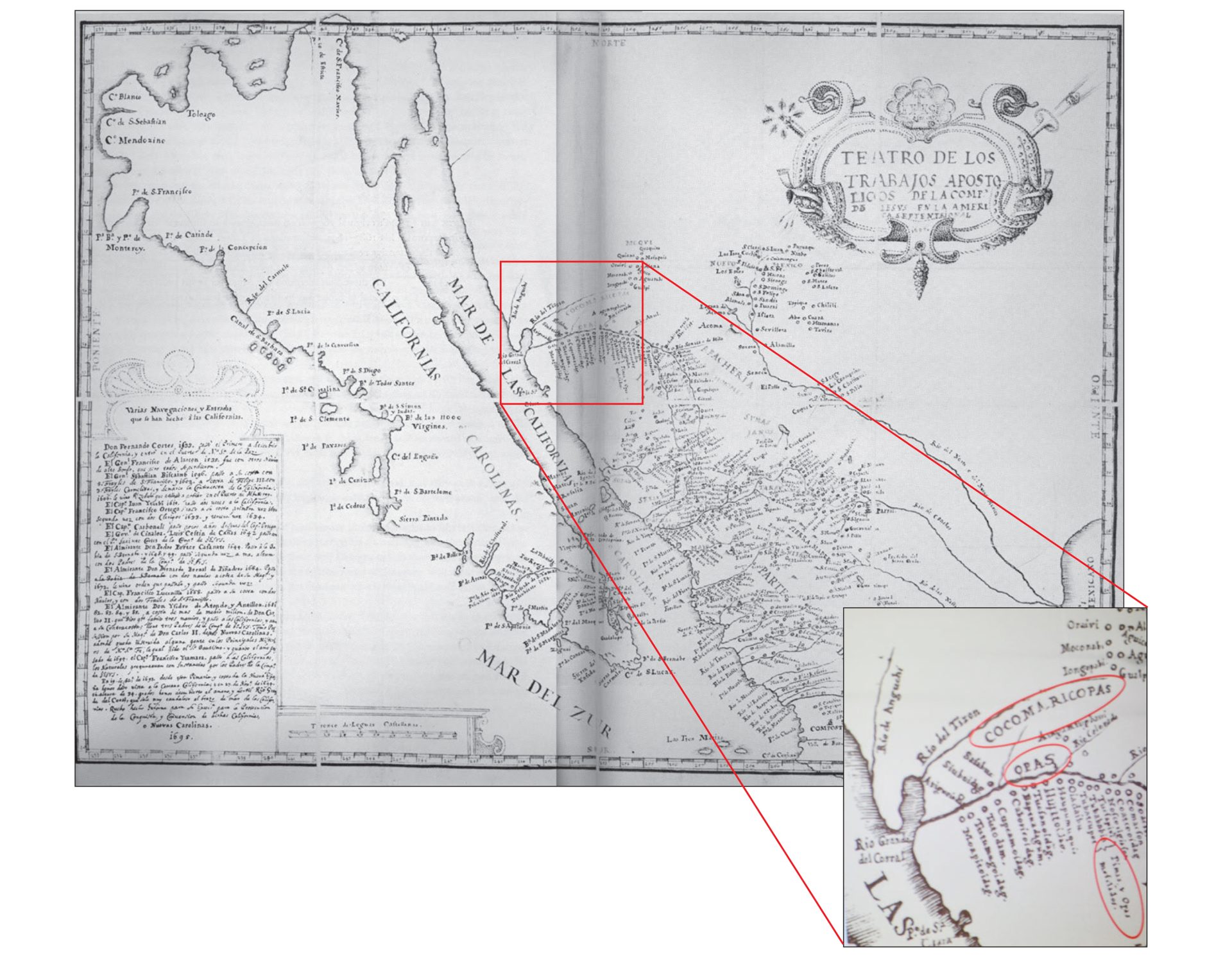
RIGHT: A small section of a map detailing the lower Colorado River from 1696 by Italian missionary and cartographer, Eusebio Kino.
The narrative behind the history details internal strife which resulted in the Piipaash/Xalychidom relocating away from the Colorado River area. “According to the narrative, there was strife with the Mohave Tribe [at the time] regarding a marriage and/or rights to fishing areas. [During that time] there were five chiefs among the Xalychidom, and over time, they all decided to relocate away from [the area of] Parker, Arizona. One of them decided to move west to the Pacific Coast, where they ended up staying,” Wright shared.
Over time, the remaining four chiefs would relocate and establish communities along different areas of the southwestern part of the Gila River. “A group would then set up a community between Casa Blanca and Sacaton. The last chief at Parker would establish a community in Laveen. The Sacaton community would leave Sacaton to join the community in Laveen, while another branch of people moved here to Lehi,” summarized Wright. “This is a Xalychidom narrative; we have strong reason to believe there were Piipaash on the Gila River that whole time,” said Wright.
“Is this the same [Xalychidom migration] story that Hu He Shaal was taught by his father?” asked Wright. He then added, “I think it’s a really interesting coincidence, nonetheless. If you trace the lineage back, those migrations and that narrative would’ve taken place in the 1700s, early 1800s,” Wright said.
Wright then showcased ancient maps which detailed the southwestern part of Arizona, dating back to the early and mid 1800s. “When the ‘Army of the West’ came through the region in 1846, they do not mention encountering any Indigenous peoples, including Piipaash peoples. Whether they were [actually] there and were hiding, we don’t know,” said Wright.
The Army of the West was the United States Army battalion commanded by Stephen W. Kearny during the Mexican-American War of 1846-1848.
As the presentation neared its end, Wright played a video titled “On and Of the Land” by RespectGreatBend, in which Piipaash elder Arnie Bread Sr. detailed his homelands in District 7, which is a current archaeological site that contains artifacts and remains of the Piipaash people. District 7 sits in the western part of the Gila River reservation at the base of the Estrella Mountains. Bread’s mother was Barbara Johnson (baḍ), who passed in 2004. She was known for her pottery, which can be found in the S’edav Va’aki Museum (formerly the Pueblo Grande Museum in Phoenix) today.
The site is private property, and unfortunately trespassers visit the area to bring their trash and fire off ammunition at the mountains, damaging the land. Wright is featured in the video, detailing the Piipaash pottery found while walking the land with Bread and staff from Archaeology Southwest.
“There is an open invitation for Piipaash and Akimel O’odham people to come see [the land from the video]. If anyone is interested in taking a field trip there, I’d be happy to coordinate it,” said Wright.
Wright finished his presentation by answering a few questions from the audience. He thanked the SRPMIC and staff for allowing him to present his findings.

